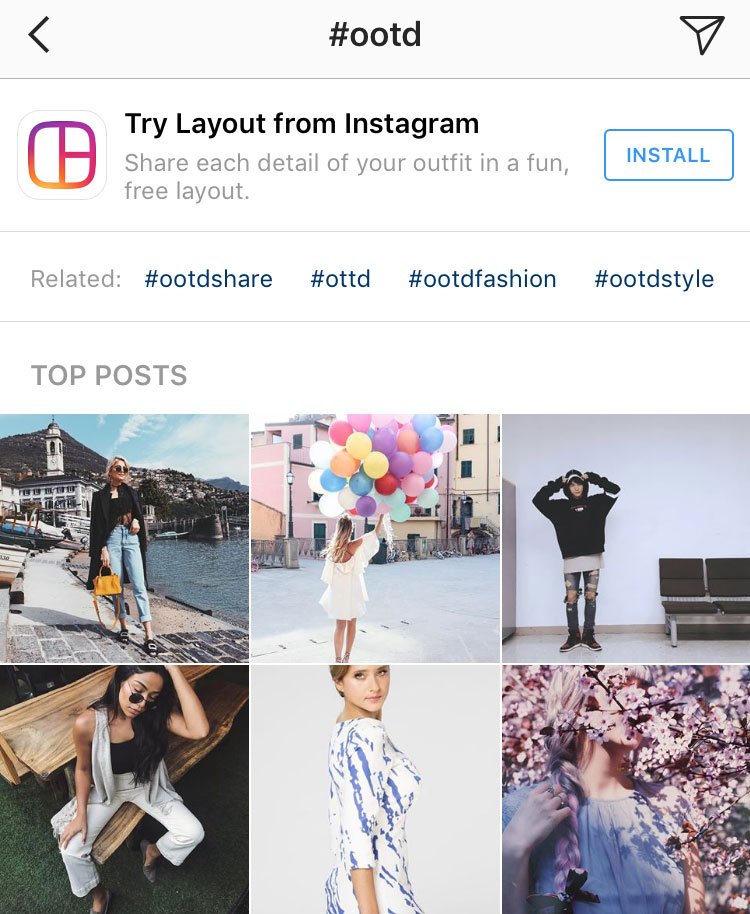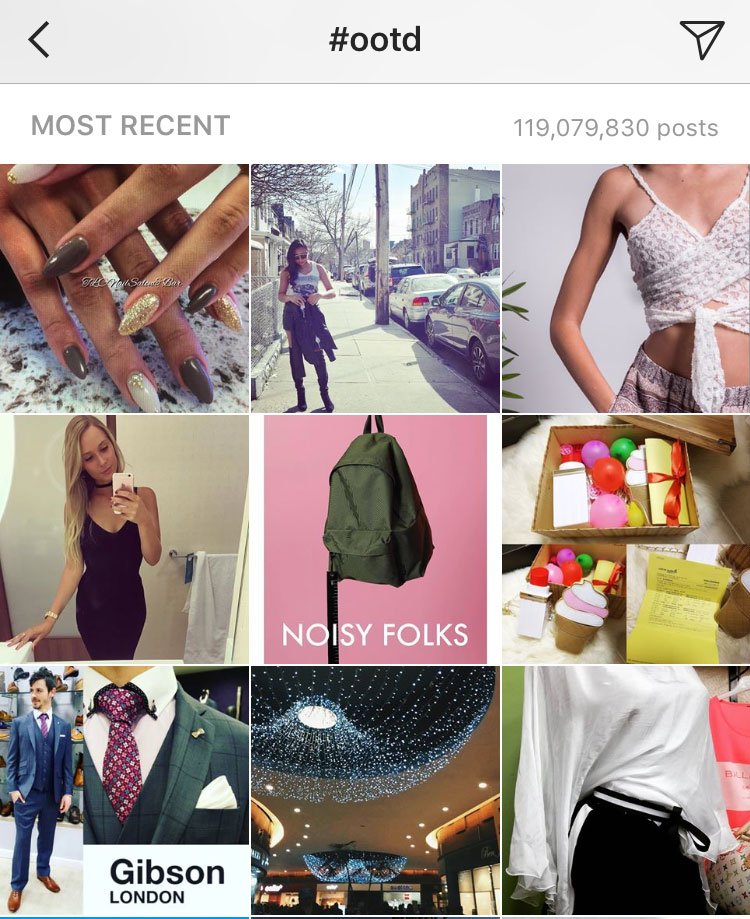How should you use hashtags - or not - on social media?
How do I use a hashtag on Twitter? Should I hashtag on Facebook? How can I use hashtags on Instagram? To answer these questions we’ve taken a look at different approaches and the best way to use them in your marketing. #winning
Originating on Twitter, the hashtag came about when ex-Google employee Chris Messina suggested using the symbol to create groups. Since then, the hashtag has evolved into a way of grouping together messages on a specific topic not only on Twitter, but across various social media platforms.
On Twitter
Why use a hashtag on Twitter? Unsurprisingly, Twitter is the most popular platform when it comes to hashtagging, and it is a particularly useful way to make a noise and get your voice heard.
To react to a trend
Both personal and business accounts use hashtags in order to respond to a trend, current affair or event. By entering into a hashtag group, you are able to engage with or have your say on a specific topic - take #BBCGlasto or #Brexit, for example.
The more a hashtag is used, the more likely it is to become a ‘trend’. Anyone who then clicks on or searches for that trend will be able to see the tweets related to it, which are broken down into ‘top’ tweets (the ones people are engaging with the most) and ‘latest’ tweets (a real-time feed of all the tweets containing the hashtag), as well as photos, videos, people, news and broadcasts related to it.
To improve visibility
For businesses, hashtagging can therefore improve visibility by demonstrating that your brand is engaging in current and topical affairs. Additionally, businesses can harness the hashtag in order to encourage people to Tweet about their own event, respond to a campaign or engage in a topical discussion which is relevant to the business.
When it comes to creating a successful hashtag and becoming a part of the feed, Twitter advises:
“Before launching a marketing campaign centered around a hashtag, search for it on Twitter. Make sure it hasn’t been used in a while or in a way that would confuse your audience. It’s best for a hashtag to be short and distinct so it can be easily added to Tweets. For example, National Small Business Week’s hashtag is “#NSBW2016”, much sleeker than “#CelebrateNationalSmallBusinessWeek2016” would be.”
See below for an example of how we used Silicon Beached’s short, distinct hashtag at their recent event to share pictures and engage with others there.
Kicking back at @SiliconBeachUK #SBLDN with the estimable @beccamagnus @paul_clarke pic.twitter.com/khbAdFy82c
— sookio (@sookio) March 22, 2017
To gain insights
Displaying hashtags at your own business events or your business location – whether it be a café, restaurant, shop or other space – will also encourage customers to search for your company and see what others have said about it online. It may mean that they have their own say on Twitter, too.
With that in mind, the hashtag is a particularly useful way to gain unfiltered insights about your business. This could be positive or negative feedback, or even consumers' thoughts on certain topics areas which could affect your business.
To be humorous
Hashtags can also be used to add humour or irony to your tweets. Take MP Nicholas Soames, king of the ironic hashtag, who often uses long hashtags to embellish his tweets with comical value:
Was there ever a more gloriously beautiful Spring day #ohtobeinEnglandnowthatAprilshereSpringhassprunginWestSussex
— Nicholas Soames (@nsoamesmp) April 9, 2017
Rather than drawing people towards your posts (although, they can do this too) comical hashtags are a great way to showcase your business' personality beyond what can often be a more serious and professional front.
One of Charlie Sheen's favourite post-reinvention mantras, #winning is another hashtag used for comical, if slightly irritating, value. Explained by Urban Dictionary as an 'exclamation used to denote feelings of joy derived from the achievement of success in life endeavors', the word winning is often used jokingly by hashtaggers to indicate they are doing well - or even not so well - in whatever it is they may be up to.
Pro tip: When creating your perfect hashtag, if you put several words together, check that this doesn't make it difficult to read or change the meaning.
A good way to do this is to CamelCase it and capitalise the first letter of each word. A hint Susan Boyle's PR team could have probably done with back in 2012:
Whenever I need a laugh I think of the hashtag disaster of Susan Boyle's album party #susanalbumparty Never gets old.
— Natasha Loring (@NatashaLoring) December 24, 2014
#oops
Using hashtags on Instagram
Like Twitter, hashtags are also popular on Instagram, drawing people towards photo content rather than engaging them in a discussion. Unlike Twitter, where one or two hashtags is probably all you want to use, Instagram lets you add up to 30 hashtags (10 in Stories) and it’s highly encouraged you do so, so as to maximise who sees your content. Why else might you want to use them?
To get on the feed
Like Twitter, hashtagging on Instagram places your image on a feed with all the other posts containing the same hashtag in their caption or comments. This enables users to post photographs which respond to certain timely themes such as #motivationmonday or broader themes such as #ootd (outfit of the day).
The Instagram feed, also in the same way as Twitter, is broken down into ‘recent posts’ and ‘top posts’. The platform recently added ‘related hashtags’ at the top of the feed too, meaning people interested in a topic area can find similarly hashtagged images which may be of interest to them.
Why be on the feed? Getting on a feed means anyone searching for your chosen hashtag could come across your content – improving your visibility and the accessibility of your Instagram page to people who are genuinely interested in the content you produce (and therefore probably the product or services you offer too!). #makingmoney
To be in with the crowd
Hashtagging in response to certain trends can also help to categorise your content and encourage like-minded people who are interested in what you’re posting to see - and hopefully like and comment on - your posts.
Whether you’re a blogger, a shop owner, a specialist service or anything else, there are almost always hashtags which will drive more people who are involved or interested in your industry towards your page.
For example, if your business is a café or restaurant, or you are a food blogger, by using the hashtags #foodie, #foodstagram, #foodblogger or simply #food on your post, anyone who searches the hashtag will be able to discover your food pictures, and in turn hopefully pay your restaurant or blog a visit.
Back in Instagram’s early days, hashtags were broadly used by both businesses and personal accounts. Now though, individuals tend not to use hashtags on their personal accounts, unless their personal account forms a part of their business’ online presence.
To be ironic
Instead, most people who hashtag on their private Instagram do so ironically. But that’s not to say businesses can’t use hashtags for comical value too.
Ridiculously long hashtags, hashtagging the polar opposite of what your image is about or the art of self-mockery through hashtags are all popular among humorous Instagrammers. For example, if a café business uploads a picture of a huge doughnut with the hashtags #bikinibodready, #girlswholift and #fitspiration, they’re likely to stir some giggles (or #lolz) among followers!
Take a look at how Raspberry Pi use Instagram comically. They often post about how people have incorrectly tagged them in posts about raspberry pies, using hashtags to add comedy to their posts and help create a light-hearted and fun personality for their brand. #workbanter
What about Facebook?
Remember when Facebook tried to make hashtags a thing? The introduction of the hashtag function back in 2013 made most of us ask, ‘should I be using them?’. Overall, probably not, but here’s why you might choose to:
To filter what you see
When making a search for specific content on Facebook, using a hashtag can be useful in order to find the most relevant posts. For example, entering ‘gym’ in the Facebook search bar will return a series of related pages and products, but not necessarily local gyms or the top workout content that a fitness enthusiast might want to see.
However, if you enter ‘#gym’ into the search bar, the results will include your friends’ posts which include the hashtag, nearby gyms, photos and highly engaged-with content which contains the hashtag, such as workout videos. This ensures that you find content that is directly relevant, rather than scrolling through heaps of memes, selfies and marriage proposals on your timeline to get to the stuff you want to see. #foreveralone
To make your business accessible
Should we be using hashtags on Facebook more than we do? As hashtagging makes it easier to filter content, it is likely your business will be easier to find for people searching for hashtags if you include them in your Facebook activity.
In reality though, people don’t tend to search for hashtags on Facebook, so while they could be useful in theory, without users on board, hashtagging on the platform is probably a bit pointless. #sorrynotsorry
But as the social media sphere is constantly evolving, who knows what the future holds for Facebook hashtags?
Want help with your social media strategy? Contact us today and get Sookio expertise on your side.






